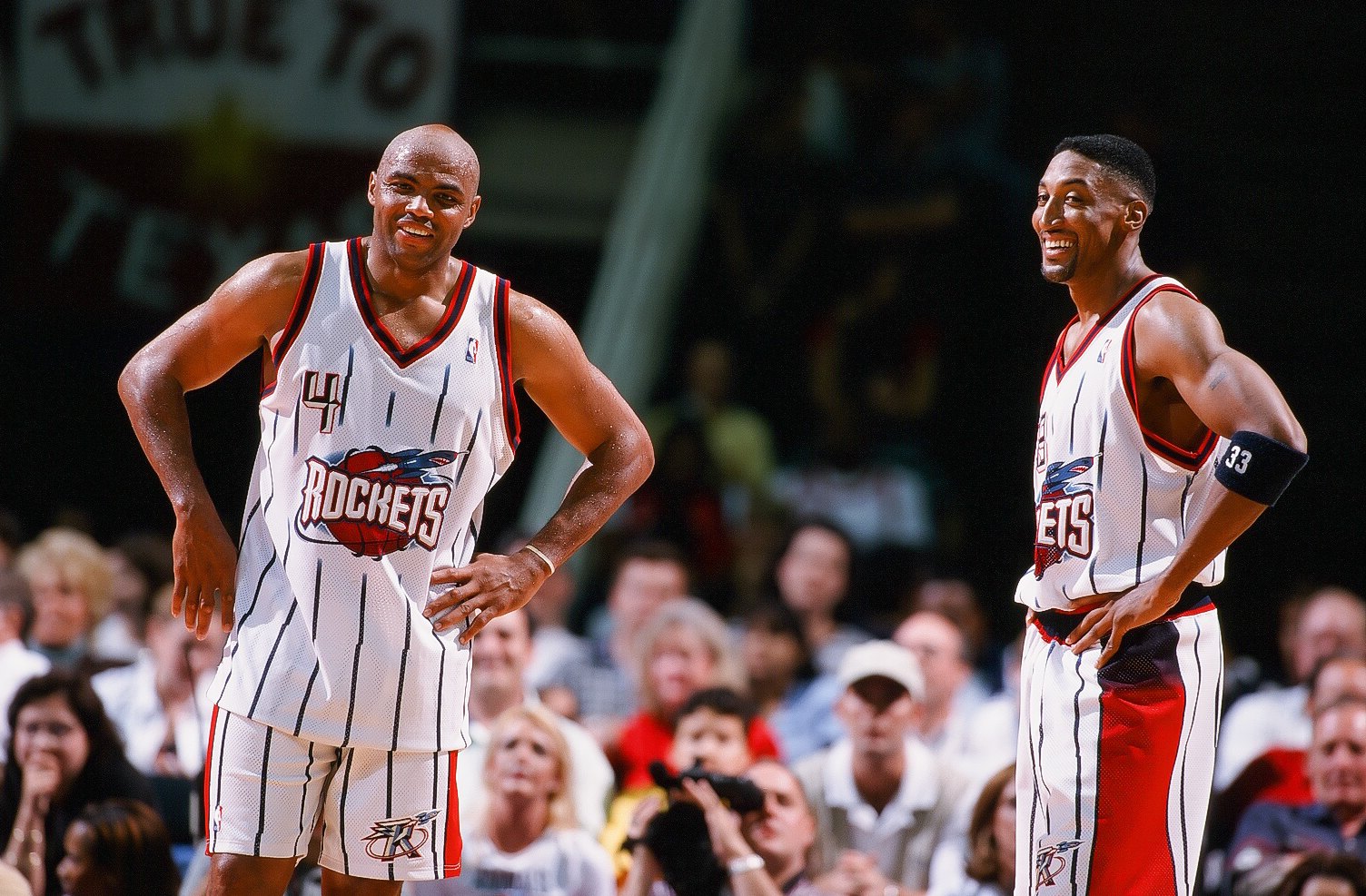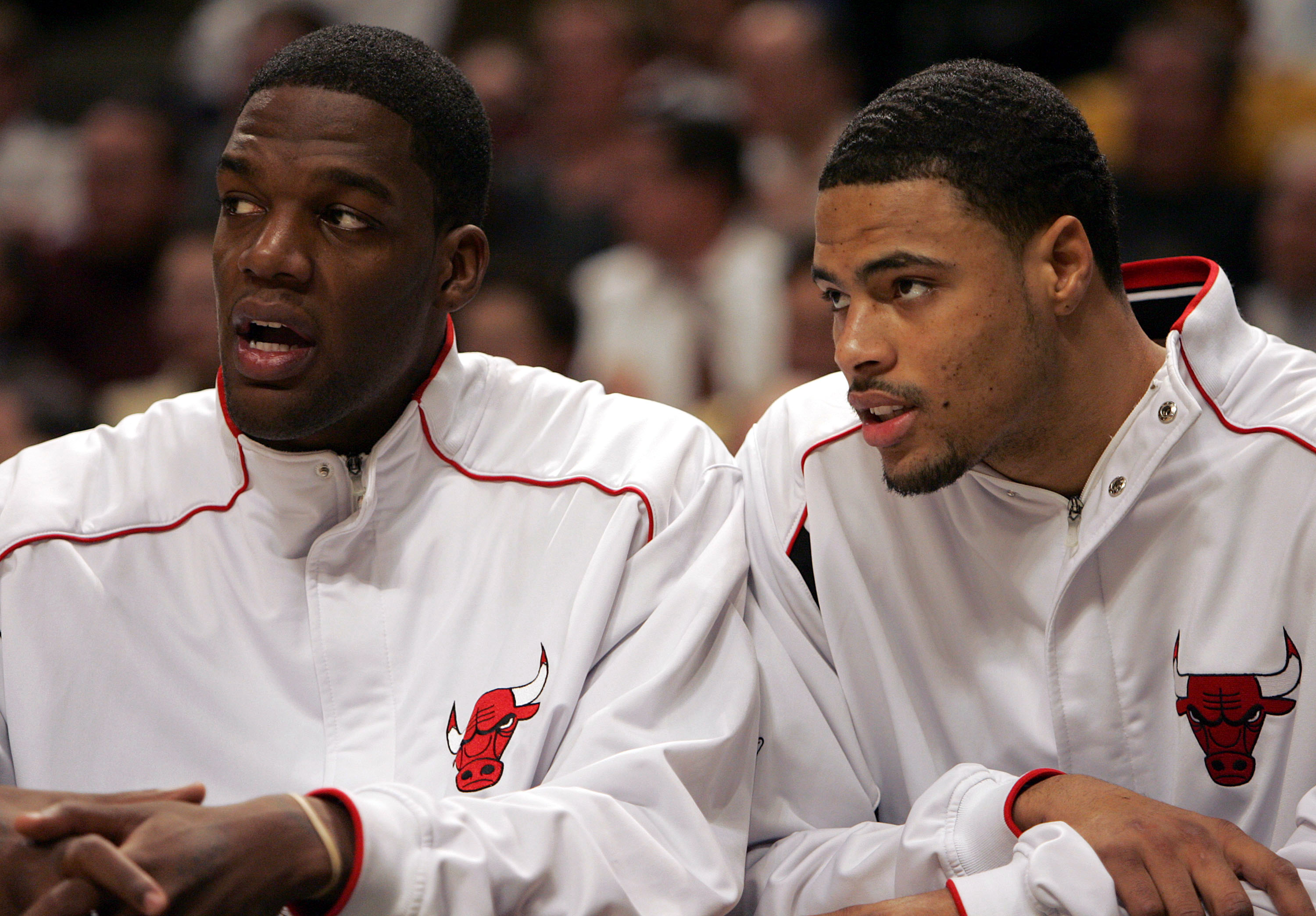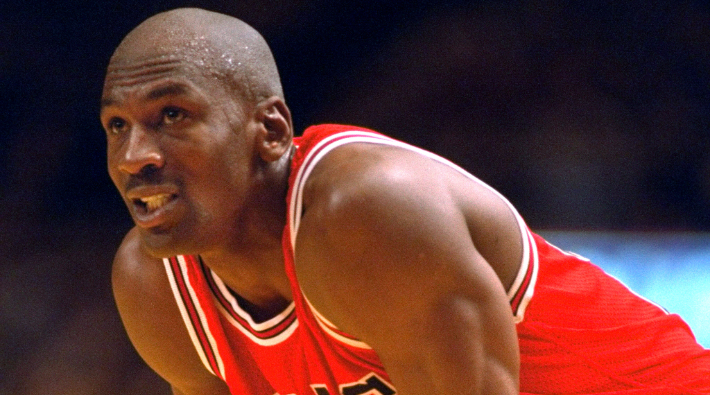
If you saw ESPN’s entrancing docuseries, The Last Dance, you’re aware of the roadblocks that finally led to the breakup of the Bulls’ championship team prior to the lockout-shortened 1999 season; particularly if you saw the closing minutes of Sunday night’s finale. But we’ll recap quickly. Phil Jackson and GM Jerry Krause didn’t want to work together anymore. Scottie Pippen wanted out after years of feeling disrespected, and both Dennis Rodman and Michael Jordan retired. Though Rodman eventually came back that year to sign with the Lakers in late February after wrapping an action movie with Dane Cook — that sure was a sentence — Jordan would, of course, stay retired for three seasons. However, even if he had wanted to come back in 1999 he still would have missed most of the 50-game season due to a severed tendon in his finger.
Episode 10 offers clearer insight into owner Jerry Reinsdorf’s attempt to bring Jackson back for one more final season in 1999 with a flawed plan around appealing to and rebuilding around Jordan, while eschewing many of his running mates due to a belief that they were past their peak and about to demand expensive contracts that they wouldn’t live up to. To be honest, that turned out to be largely true, but Jordan’s assertion that all sides would have come back on one-year deals to go for number seven makes you wonder.
With the deck cleared, Krause had the chance to build another championship team without having to watch Jordan and Jackson receive the lion’s share of credit. At last, Jerry Krause could dance without judgment and mockery, but he should have been careful what he wished for as the Bulls endured a disastrous run from 1999 to 2003 under his watch, damned by impatience, bad choices, and bad luck. Could things have gone differently had the Bulls divorce from Jordan been less final? The conclusion of The Last Dance inspires a want to peer at what came next and what could have happened.
1999 And The Hard Restart

It’s important to note that Krause didn’t want the Bulls to suck following the Jordan era. He had even tried to soften the inevitable fall by exploring a franchise-altering Pippen trade with the Celtics ahead of the 1997 draft, but it reportedly got shut down by Jordan. Looking at the forgettable return the Bulls got for Pippen in a sign-and-trade with the Rockets a year later makes you wonder if Krause should have fought harder to pull the trigger on a deal that would have netted the team draft picks that could have been used to pick Chauncey Billups and Tracy McGrady. Assessing the contributions that would have come from those rookies and how they would have influenced the pursuit for the Bulls’ sixth title is a hard task. Maybe Michael Jordan doesn’t even stick around in that scenario. But the team doubtlessly would have been better off long term than they were once the actual rebuild got rolling in 1999.
Former Blazers guard Damon Stoudamire summed up the indifference to the post-Jordan Bulls perfectly at the time. “It’s cold as hell there, and they’re rebuilding […] Without Jordan, without Pippen, they’re a lottery team. That doesn’t have much appeal to me.” Mighty Mouse didn’t want to try and put on Superman’s cape, and he wasn’t alone. The Bulls had had some interest in trying to appeal to explosive two-way forward Antonio McDyess to be their next foundational superstar, but he quickly decided to limit his suitors to teams he thought could actually win a few games.
Remember, the insane two-week free agency period in 1999 didn’t allow for lengthy courtships and watchful waiting to see where other players would land. Everything went quickly, and so the Bulls wound up settling for scoring guard Brent Barry as their main prize and signing him to a not-insignificant 6 year/$27 million deal. Together, Kukoc, Ron Harper, and Barry would lead a dreadful Bulls team that wound up “winning” the #1 overall pick in the 1999 Draft. Not quite the same level of prize that the team had been used to, but a key win for Krause and the organizational/player development mindset.
Across his career, Krause’s biggest wins had come through the draft, pulling Pippen and Horace Grant in 1987, BJ Armstrong in 1989, and Kukoc as a draft-and-stash in 1990. Krause had reason to believe in himself as a talent evaluator and the Bulls absolutely hit in the 1999 NBA Draft.
There’s a case to be made thanks to hindsight that Baron Davis would have been a better long term fit or that Steve Francis might have been a more exciting and explosive option, but #1 pick Elton Brand profiled as a sturdy presence who could go for 20 and 10 (which he did across the first 10 seasons of his career, on average). With the 16th pick, the Bulls took Ron Artest (aka Metta World Peace), giving them a stellar wing defender with some offensive potential.
A Flawed Sales Pitch And Reboot 2.0

As quickly as Krause fell in love with players he also seemed to sour on them. Barry was shipped out after one season and Kukoc lasted just a season and a half without his Last Dance running mates before being flipped for draft capital. The 1999-2000 team was a weird mix of young players and old friends like BJ Armstrong and Will Perdue on return engagements from the Bulls’ first three-peat. Knicks pest John Starks even had a four-game cameo, coming over in the Kukoc trade. The result was another lost season.
The Bulls went all-in on the 2000 draft, hoping to add to Brand and Artest. And they did, pulling Jamal Crawford via trade. But they missed on most of their six picks. Marcus Fizer, who they took fourth in a weak draft, would have a few decent if unspectacular seasons with the Bulls but played his last NBA game at 27. (He’d play internationally for almost a decade after.)
By this point, the Bulls weren’t vastly improved, but they clearly felt like they had a better sales pitch to take to free agents. It was still cold. There was still no Jordan or Pippen, but they had some interesting young prospects that they could theoretically build around. And it was almost enough, with All-Star guard Eddie Jones nearly accepting a deal to play for the Bulls and help supercharge the rebuild before instead going home to Florida to play for the Heat. Tracy McGrady was also someone that the Bulls unsuccessfully courted with the then 21-year-old choosing to instead sign with the Magic (where he became an elite scorer) due, in part, to what he perceived as people in his camp trying to steer him to Chicago for their own benefit.
Krause dismissed the Jones and McGrady rejections as having to do with geography in 2001, but he also clearly felt like the Bulls needed a rebrand to enhance their appeal, departing from the slow and steady track to something a little more flashy. Ahead of the 2001 draft, Krause sent Brand to the Clippers for the draft rights to high school big man Tyson Chandler so he could team with big-bodied high school post player Eddy Curry, the Bulls’ fourth pick. Unfortunately, the strategy didn’t quite work out. For the Bulls, at least. To be fair, while both players never lived up to the hype (early comps were insane, with some hurling out names like Kevin Garnett and Shaq), both had long careers and Chandler, in particular, stood out for a time as a dominant defender.
Krause’s final lottery pick could have redeemed his post-Jordan years battle plan. Jay Williams, selected with the second pick out of Duke in the 2002 draft had a solid enough rookie season, showing some promise after running through the NCAA. Who knows how far he could have gone if not for a tragic motorcycle accident that scuttled his NBA career in June of 2003, two months after Krause had stepped away from his position atop the Bulls’ organizational hierarchy citing health concerns.
Former Bulls guard and original three-peat stand-out John Paxson replaced Krause, inheriting a team that seemed as though it was stocked with interesting young talents and led by a late-prime Jalen Rose (who Krause had acquired by trading away Artest and promising young big Brad Miller — who would both blossom outside of Chicago). But the Bulls didn’t really show signs of life until the 2004-2005 season thanks, in large part, to players Paxson had drafted and developed like Kirk Hinrich, Ben Gordon, and Luol Deng. 15 years later and its Paxson who is stepping away to let Arturas Karnisovas takeover the Bulls following a mixed run with some good but not great teams and an incomplete (and sputtering) rebuild.
What If?

There was some chatter when Jordan retired the second time following the Bulls’ sixth title about why he hadn’t been given some kind of stake in the team that he had turned into a global brand. At the January 2000 press conference announcing his role as part-owner and executive for the Washington Wizards (despite a previously rocky relationship with owner Abe Pollin), Jordan kept it somewhat diplomatic, saying he wasn’t looking for that kind of role at the time but that he hadn’t exactly been quiet about his more recent pursuits while hearing nothing from Reinsdorf.
We can speculate all day on why an offer never came. Maybe Reinsdorf thought Krause and Jordan could never coexist and favored Krause’s track record in that role over Jordan’s raw acumen. Or maybe he didn’t want to invite someone into the tent who would be too hard to control, override, and get rid of if he failed due to his overwhelming popularity as a God in Chicago.
Let’s imagine that an offer did come, reuniting Jordan and the Bulls and let’s even suggest that Krause, like Wes Unseld in Washington, would have found a way to work with and under Jordan. In this scenario, Michael rejoins the Bulls in January of 2000 and resumes his career as a player in September of 2001 with rumors about a return starting up in May of that year — as they did with his Wizards career.
Think about the impact Jordan the executive’s presence could have had on that year 2000 free agency shutout that the Bulls endured. Is Tracy McGrady choosing the Magic over the Bulls if Michael Jordan is across from him at the negotiating table telling him he can be his heir apparent? What about Eddie Jones, who Krause said called him in tears over his last-minute switch to the Heat? Remember, Jones was one of the first Jordan brand ambassadors in 1997. No way that wouldn’t have been a factor. With Jones and maybe McGrady, the Bulls are an entirely different team in 2000 and beyond. There’s no need to trade Brand when he’s a part of a core on a likely playoff team. And perhaps conflicts that led to Artest’s exit don’t arise under a Jordan regime, allowing him to bloom with the Bulls.
There are countless other questions: does Toni Kukoc get traded if Jordan is in place? Does Eddy Curry get drafted if Elton Brand is still on the roster? Would Jordan quickly dispatch of Phil Jackson’s replacement, Tim Floyd, to install Doug Collins, Jackson’s predecessor with the Bulls and the man he handpicked to lead the Wizards bench for his actual 2001 comeback? Would twilight veterans like Patrick Ewing or Mitch Richmond have taken the minimum to ring chase with the Bulls rather than close their careers with the Magic and Lakers respectively? You can thought experiment the 2001 Bulls to some pretty high heights by adding Jordan into the mix. Especially on the floor.
We know, of course, that Jordan wasn’t the same when he made his second comeback. Some of the quickness had left him and his shooting percentage was among the worst of his career while his field goals per game were way up (4th most in his career). Again, three seasons had passed, but Wizard fans still got a show, with a 38-year-old who averaged 5 boards, 5 assists, and almost 23 points a night, going off for 40-or-more points five times and 30-or-more points 16 times in 60 games. If not for a torn meniscus that slowed and then stopped him, Jordan might have willed a mostly barren Wizards team to the playoffs. Then he came back the next year, played all 82 games, and averaged a hair over 20 points a night while tightening up his shooting percentage. With a more talented roster, it’s likely the shape of those final two Jordan seasons may have changed some, but he clearly still had the ability to contribute every night and turn it on when he had to — something to consider with a team that would have had a better chance at making some noise in the playoffs.
Let’s take Jordan’s knee busting collision with Wizards rookie Etan Thomas out of the equation and assume the 2001-2002 Bulls would have had a fully healthy Jordan all season. Now ask yourself: would that Bulls team with a rotation of Jordan, Tracy McGrady, Eddie Jones, Elton Brand, Ron Artest, Jamal Crawford, Eddy Curry, Toni Kukoc, and Marcus Fizer (who was 2nd team All-Rookie the year before, let us not forget) not be the deepest, most athletic roster in Bulls’ history? You can swap Curry for Jason Richardson, Shane Battier, or anyone else taken in the 2001 lottery. Take Artest out and put Jalen Rose in. Regardless, with that much talent, would the Bulls have not overtaken the Nets and Celtics of that time to challenge the Phil Jackson coached Kobe/Shaq Lakers in what would have been an epic and ultra compelling NBA Finals slugfest?
The last dance might not have been the last dance after all under that scenario, giving Jordan a potential seventh (and eighth?) ring and further influencing the GOAT conversation (imagine MJ taking a ring off Kobe). In a cruel twist, that triumph would have also reinforced Jerry Krause’s legacy as a championship team builder (remember, he either drafted, signed, or courted all of the above-referenced talent) while tying him, forevermore, to Michael Jordan. It’s the kind of story that would have been worth its own stunning docuseries on how it shook up and impacted the NBA, but unfortunately, the reality is a lot less fantastic. Especially for Bulls fans who are still waiting for the next Michael Jordan… or, at least, the next Jerry Krause.
